Manual shift linkage is a critical mechanical system connecting the gear shifter to the transmission, enabling precise gear changes in vehicles with manual transmissions.
It ensures smooth driver control, reducing wear on transmission components and enhancing overall vehicle performance through proper synchronization and alignment of shifting mechanisms.
What is Manual Shift Linkage?
Manual shift linkage is a mechanical system connecting the gear shifter to the vehicle’s transmission, enabling drivers to manually change gears. It consists of rods, couplers, and bushings that translate the shifter’s movements into precise gear shifts. Proper alignment and synchronization are crucial for smooth operation, ensuring the transmission responds accurately to driver input. This system is essential for vehicles with manual transmissions, providing control and efficiency during driving.
Importance of Manual Shift Linkage in Vehicle Operation
Manual shift linkage is vital for precise control over gear changes, ensuring smooth and efficient vehicle operation. It directly connects driver input to the transmission, enabling accurate shifting and maintaining proper synchronization. This system reduces wear on transmission components by preventing misalignment and ensures optimal performance during acceleration and deceleration. Properly functioning linkage enhances driving experience and maintains the vehicle’s mechanical integrity.

Components of Manual Shift Linkage
The manual shift linkage system consists of key components like the gear shifter, linkage rods, and transmission coupler, working together to facilitate smooth gear transitions.
Gear Shifter
The gear shifter, located inside the vehicle, is the driver’s interface for manually selecting gears. Connected to the transmission, it translates the driver’s movements into precise gear changes. Typically mounted on the center console or floor, the shifter operates via a system of rods and couplers. Its design varies, with modern shifters offering shorter throws and smoother operation. Proper maintenance, such as lubricating pivot points, ensures optimal performance and prevents wear over time.
Linkage Rods
Linkage rods are crucial components in the manual shift linkage system, acting as connectors between the gear shifter and the transmission. These rods transmit mechanical force, enabling smooth gear transitions. Typically constructed from durable materials like steel, they are designed to withstand stress and wear. Over time, linkage rods can wear out, leading to loose connections and erratic shifting. Regular inspection and lubrication are essential to maintain their functionality and ensure precise gear changes.
Transmission Coupler
The transmission coupler is a vital component that connects the linkage rods directly to the transmission, ensuring accurate gear engagement. It translates mechanical movements from the shifter into precise shifts within the gearbox. Over time, the coupler can wear out due to friction and stress, leading to misalignment or slippage. Regular maintenance, such as cleaning and lubricating the coupler, is essential to prevent premature wear and maintain smooth, reliable shifting performance.
How Manual Shift Linkage Works
The manual shift linkage system mechanically connects the gear shifter to the transmission, enabling precise control over gear changes by translating the shifter’s movements into transmission engagement.
Connection Between Gear Shifter and Transmission
The gear shifter is mechanically linked to the transmission through a system of rods and bushings, allowing the driver to control gear engagement. When the shifter is moved, it transmits the driver’s input to the transmission, ensuring precise gear selection. This connection is vital for smooth and efficient shifting, as it directly impacts the vehicle’s acceleration and responsiveness. Proper alignment and lubrication of these components are essential to maintain optimal performance and prevent mechanical issues.
Role of Linkage in Gear Shifting
The manual shift linkage plays a crucial role in gear shifting by transferring the driver’s input from the gear shifter to the transmission. It ensures precise alignment and smooth engagement of gears, allowing the vehicle to operate efficiently. The linkage system facilitates seamless communication between the shifter and transmission, enabling accurate gear selection and maintaining control during acceleration and deceleration. Proper functioning of the linkage is essential for a responsive and smooth driving experience.
Syncing Clutch and Accelerator with Manual Shift
Syncing the clutch and accelerator with manual shift is essential for smooth gear transitions. The clutch disengages the engine from the transmission, allowing gear changes without resistance. As the driver presses the clutch fully, they shift gears and then gradually release it while applying the accelerator. Proper timing ensures a seamless connection, preventing jerky movements and wear on components. This synchronization enhances driving efficiency and maintains control during acceleration and deceleration.
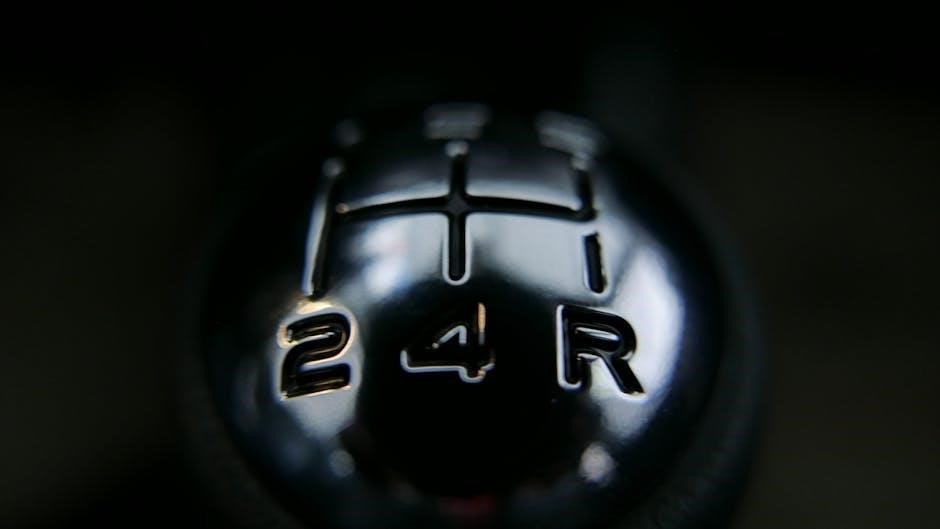
Common Problems with Manual Shift Linkage
Common issues include wear and tear of bushings, misalignment of linkage components, and corrosion, all of which can disrupt smooth gear shifting and require prompt attention.
Wear and Tear of Bushings
The bushings in the manual shift linkage are prone to wear and tear over time, leading to loose connections and reduced precision in gear shifting.
When bushings degrade, the linkage can become misaligned, causing the shifter to wobble or gears to engage improperly. Regular inspection and replacement of worn bushings are essential to maintain smooth operation and prevent further damage to the transmission system.
Misalignment of Linkage Components
Misalignment of manual shift linkage components is a common issue, often caused by improper installation, accidents, or heavy usage over time.
When components like rods or couplers are out of alignment, the gear shifter may not engage gears properly, leading to difficulties in shifting or gears slipping out of place.
Regular inspections and adjustments are crucial to ensure proper alignment, as misalignment can cause premature wear on other parts of the system and lead to costly repairs if left unaddressed.
Corrosion and Rust
Corrosion and rust are significant issues for manual shift linkage components, particularly in vehicles exposed to moisture or salty road conditions.
Over time, rust can weaken metal parts, leading to breakages and failure of critical components like rods and couplers.
Regular cleaning and application of protective coatings or lubricants can help prevent corrosion, ensuring the longevity and reliability of the manual shift linkage system.
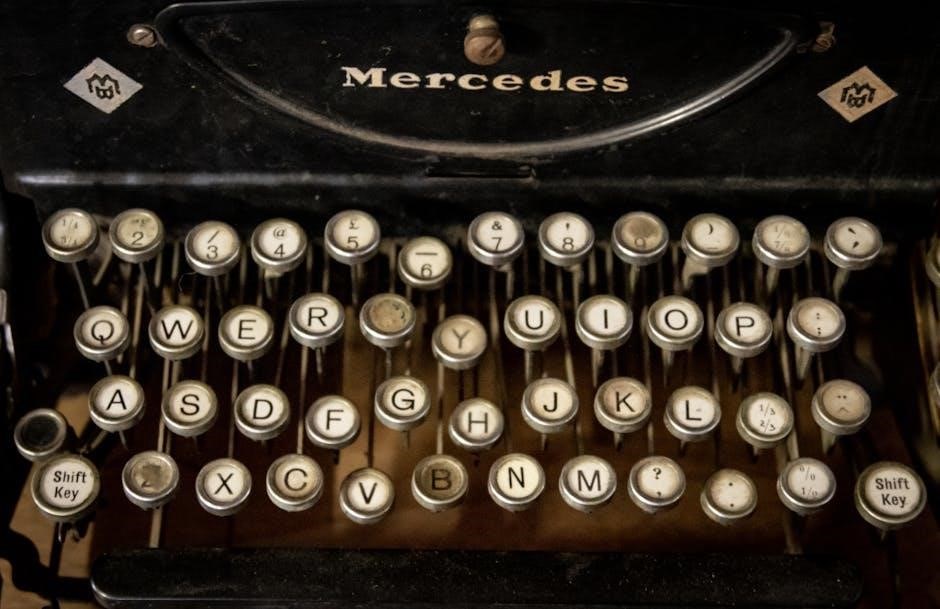
Maintenance Tips for Manual Shift Linkage
Regular cleaning prevents dirt buildup, while lubrication ensures smooth operation of moving parts.
Inspecting bushings and rods for wear helps maintain precise gear shifts and overall system efficiency.
Regular Cleaning
Regular cleaning is essential for maintaining the manual shift linkage system. Dust, dirt, and debris can accumulate on the components, causing friction and wear. Use a soft brush or cloth to wipe down the gear shifter, linkage rods, and coupler. This prevents corrosion and ensures smooth operation. Cleaning should be done periodically, especially after driving in dusty or muddy conditions. A clean system reduces the risk of mechanical issues and extends longevity.
Lubrication of Moving Parts
Lubrication is crucial for maintaining smooth operation of the manual shift linkage. Apply grease or silicone-based lubricants to moving parts like bushings and rod ends to reduce friction and wear. Regular lubrication prevents corrosion and ensures precise gear shifting. Neglecting this step can lead to premature wear and potential breakdowns, affecting transmission performance and driver control.
Inspection of Bushings and Rods
Inspecting bushings and rods is essential for ensuring the longevity of the manual shift linkage. Check for signs of wear, such as cracks, fraying, or excessive play in the bushings. Rods should be examined for bends, dents, or corrosion. Regular inspections help identify potential issues early, preventing costly repairs and ensuring smooth gear transitions. Replace any damaged components promptly to maintain optimal shifting performance and driver control.

Adjustments and Repairs
Adjustments and repairs for manual shift linkage involve fine-tuning components like bushings and rods to ensure smooth operation. Regular maintenance prevents major breakdowns and enhances performance.
Adjusting the Shifter Linkage
Adjusting the shifter linkage ensures proper alignment and smooth gear transitions. Start by loosening the linkage bolts, then realign the shifter with the transmission. Use a wrench or screwdriver to tighten the bolts once aligned. Ensure the shifter moves freely without binding. Misalignment can cause difficulty shifting gears or stuck positions. Regular adjustments prevent wear and tear, maintaining optimal performance and driver control. Precision is key to avoid mechanical issues.
Replacing Worn Bushings
Replacing worn bushings is essential for maintaining smooth manual shift linkage operation. Disconnect the linkage from the transmission and remove the old, damaged bushings. Clean the area thoroughly before installing new bushings, ensuring proper alignment and fit. Lubricate the new bushings to prevent friction and wear. Tighten all connections securely to avoid misalignment. This repair improves gear shifting precision, reduces noise, and prevents further damage to the linkage system.
Realigning the Linkage System
Realigning the linkage system ensures proper gear engagement and smooth operation. Disconnect the linkage from the transmission and adjust each component to factory specifications. Use wrenches to tighten bolts and ensure all rods are properly connected. Wiggle the shifter to confirm smooth movement and no binding. Misalignment can cause stuck gears or neutral hang-ups, so precise realignment is crucial for maintaining optimal shifting performance and preventing further damage to the system.
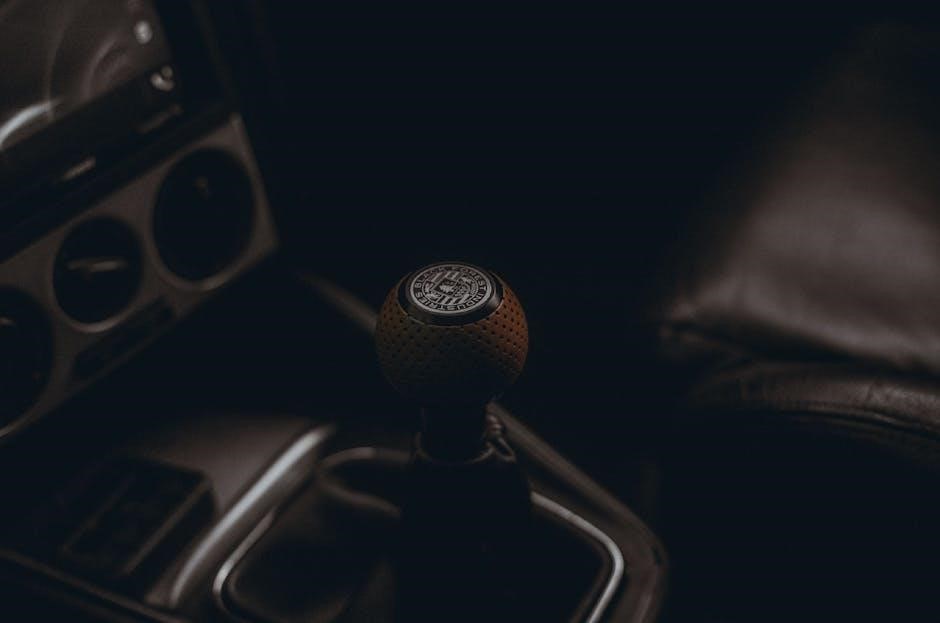
Troubleshooting Common Issues
Identify issues like shifter wobble, stuck gears, or neutral hang-ups by inspecting linkage alignment, bushing wear, and corrosion. Regular maintenance prevents these problems from escalating.
Diagnosing Shifter Wobble
Shifter wobble often stems from worn bushings, misaligned linkage, or loose connections. To diagnose, shake the shifter vigorously and observe excessive movement. Inspect the linkage rods and coupler for wear or corrosion. If the shifter moves independently of the transmission, it indicates a disconnect in the system. Addressing these issues promptly prevents further damage to the manual shift linkage components and ensures smooth gear transitions.
Fixing Stuck Gears
Stuck gears typically result from dirt, corrosion, or worn components in the manual shift linkage; To resolve this, clean the linkage thoroughly and apply lubricant to moving parts. Inspect for damaged or corroded elements and replace them if necessary. Ensure proper alignment of the shifter and transmission coupler. If gears remain stuck, consulting a professional mechanic is recommended to prevent further damage to the transmission or shifter mechanism.
Resolving Neutral Hang-Ups
Neutral hang-ups occur when the gear shifter remains in the neutral position, preventing proper gear engagement. To resolve this, inspect the shifter linkage for misalignment or worn components. Clean and lubricate all moving parts to ensure smooth operation. Adjust the shifter linkage to restore proper alignment with the transmission; If the issue persists, replacing damaged or corroded parts may be necessary to restore full functionality to the manual shift system.
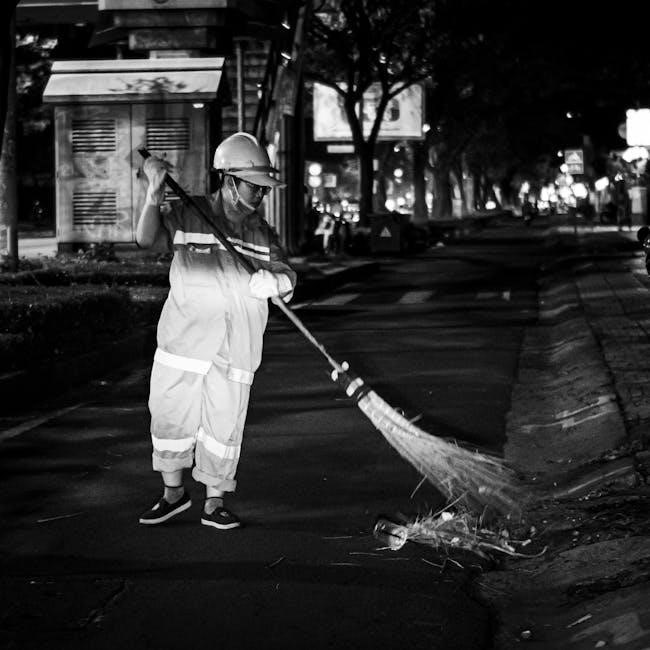
Installation Guide for Manual Shift Linkage
Learn how to replace your manual shift linkage with a step-by-step guide. Disconnect the old system, install the new components, and test the mechanism. Ensure proper alignment and function for smooth gear shifts. Consult a professional if unsure.
Disconnecting the Old Linkage
To disconnect the old manual shift linkage, start by accessing the transmission area, typically requiring the car to be raised and supported with jack stands for safety. Locate the linkage connections, which may be secured with bolts, nuts, or clips. Remove these fasteners carefully to avoid stripping. Once detached from the transmission, mark or label each component for reinstallation. Consider taking photos for reference and clean the area to prevent contamination. Consult your vehicle’s specific manual for detailed instructions to ensure accuracy and avoid missing critical steps.
Installing the New Linkage
Begin by aligning the new manual shift linkage with the transmission coupler, ensuring it is properly seated. Reattach the linkage using the appropriate bolts, nuts, or clips, tightening them securely but avoiding over-tightening. Reconnect the linkage to the gear shifter, ensuring proper alignment and smooth movement. Once installed, lower the vehicle and test the shifter to confirm it operates smoothly and accurately engages gears without resistance or misalignment.
Testing the Shifter After Installation
After installing the new linkage, start the vehicle and test the shifter in each gear to ensure smooth operation. Check for any resistance, misalignment, or unusual noises. Take the car for a short drive, shifting through all gears to confirm proper engagement. If the shifter feels loose or gears are hard to engage, adjustments may be needed. A smooth, precise shifting experience confirms successful installation.

Manual Shift Linkage vs. Automatic Transmission
Manual shift linkage offers greater driver control and fuel efficiency compared to automatic transmissions, requiring more mechanical engagement but providing a more connected driving experience with precise gear shifts.
Differences in Mechanism
Manual shift linkage relies on a gear shifter connected to the transmission via rods and couplers, requiring driver input to change gears using a clutch pedal. Automatic transmissions, however, use a torque converter and sensors to automatically adjust gears without manual intervention. This fundamental difference in mechanism results in distinct driving experiences, with manuals offering more control and fuel efficiency, while automatics prioritize ease and convenience.
Advantages of Manual Shift Linkage
Manual shift linkage provides enhanced driver control, allowing precise gear changes that improve fuel efficiency and performance. It often costs less to maintain and repair compared to automatic systems. Additionally, manual transmissions typically weigh less, contributing to better vehicle agility. Drivers who prefer an engaging experience appreciate the hands-on connection to the vehicle, making manual shift linkage a favored choice for both economical and performance-driven applications.
Disadvantages Compared to Automatic
Manual shift linkage requires constant driver engagement, which can be tiring in heavy traffic. It demands skill and practice to master smooth shifting, potentially leading to stalling for inexperienced drivers. Additionally, the need to press the clutch and manually change gears can be less convenient compared to the ease of automatic transmissions. Over time, this can also result in wear on the clutch and other components, increasing maintenance needs;
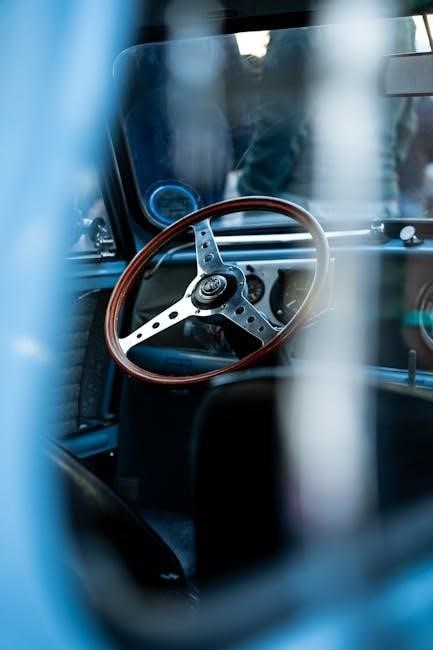
Safety Precautions
Handling tools safely and ensuring proper alignment are crucial. Avoid over-tightening components, as this can damage the linkage system and lead to mechanical failure or poor shifting performance.
Handling Tools Safely
When working with manual shift linkage, always handle tools like wrenches and pliers with care to avoid slipping or applying excessive force. Ensure proper grip and leverage to prevent accidental damage to components. Use protective gloves to enhance control and safety. Misuse of tools can lead to linkage misalignment or wear, potentially causing operational issues. Always maintain focus and follow recommended torque specifications to avoid over-tightening, which can damage bushings or rods.
Ensuring Proper Alignment
Proper alignment of manual shift linkage components is crucial for smooth operation. Disconnect the linkage at the transmission and check for any misalignment or wear; Ensure all rods and couplers are securely connected and properly adjusted. Use alignment tools or reference marks to verify correct positioning. Misalignment can cause gear shifting issues or damage to transmission components over time. Always refer to the vehicle’s service manual for specific alignment procedures and adjustments.
Avoiding Over-Tightening
Avoiding over-tightening is essential to prevent damage to manual shift linkage components. Over-tightening can lead to excessive friction, wear on bushings, and potential seizure of moving parts. Always follow the manufacturer’s torque specifications when tightening bolts or nuts. Ensure components are snug but not overly tightened, as this can restrict smooth shifting and cause premature wear. Regular inspection and proper lubrication can also help mitigate issues arising from over-tightening.
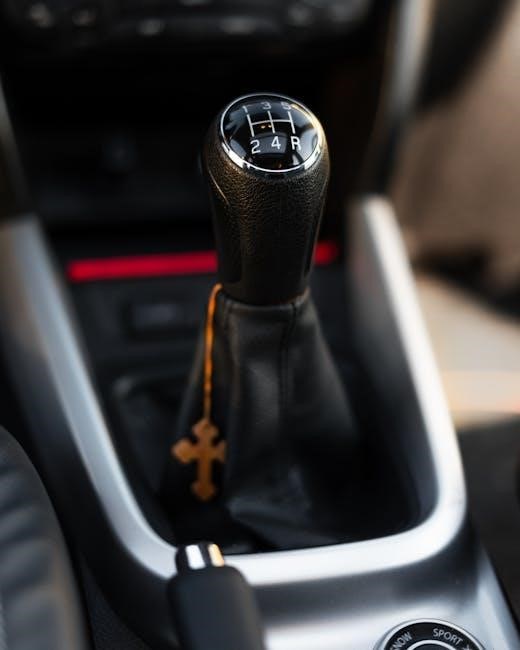
Customization and Performance Modifications
Upgrading to performance linkage, short shift kits, and adjusting shift throw enhances precision and responsiveness, offering a more controlled and engaging driving experience for enthusiasts.
Upgrading to Performance Linkage
Upgrading to performance linkage enhances shifting precision and reduces play, offering a more responsive and sporty feel. High-quality materials like aluminum or carbon fiber improve durability and minimize wear. These upgrades are popular among enthusiasts seeking tighter control over gear changes, especially in performance or racing applications. They often include shorter shift throws and optimized bushings for smoother, faster shifting, making every drive more engaging and precise.
Short Shift Kits
Short shift kits are designed to reduce the distance between gear shifts, providing quicker and more precise control. They typically include modified linkage components and shorter shift arms, minimizing the throw required to change gears. This upgrade enhances driving responsiveness, especially in performance or racing scenarios. By improving shift accuracy and speed, short shift kits are popular among enthusiasts seeking a more engaging and dynamic driving experience. They are relatively easy to install and offer immediate feedback.
Adjusting Shift Throw
Adjusting shift throw involves modifying the distance the gear shifter travels between gears. This customization shortens or lengthens the shift movement, improving driver control and responsiveness. Shorter throws are popular for performance driving, enabling quicker gear changes and a more precise feel. Proper adjustment ensures smooth operation without compromising the linkage system’s functionality. This modification is often combined with short shift kits for enhanced driving dynamics and a more connected experience behind the wheel.
Manual shift linkage is essential for precise gear control, connecting the driver to the transmission. Proper maintenance ensures smooth operation, enhancing driving performance and longevity of the system.
Manual shift linkage connects the gear shifter to the transmission, enabling precise gear changes. It includes components like the gear shifter, linkage rods, and coupler, ensuring smooth vehicle operation. Proper maintenance, such as cleaning and lubricating moving parts, is essential to prevent wear and tear. Regular inspections of bushings and rods help identify potential issues early. Addressing problems like misalignment or corrosion can enhance performance and longevity.
Understanding how to diagnose and repair common issues, like shifter wobble or stuck gears, is crucial for maintaining optimal functionality. By following maintenance tips and performing timely adjustments, drivers can ensure reliable and efficient manual shifting. This system remains vital for drivers who prefer manual transmissions, offering control and driving precision.
Final Thoughts on Manual Shift Linkage
Manual shift linkage is vital for smooth gear changes, requiring regular maintenance to prevent wear. Addressing issues promptly ensures optimal performance and longevity. The satisfaction of resolving problems like misalignment or corrosion enhances driving satisfaction. Understanding and caring for this system fosters a deeper connection between driver and vehicle. As automotive technology evolves, the manual shift linkage remains a testament to mechanical precision and driver engagement.